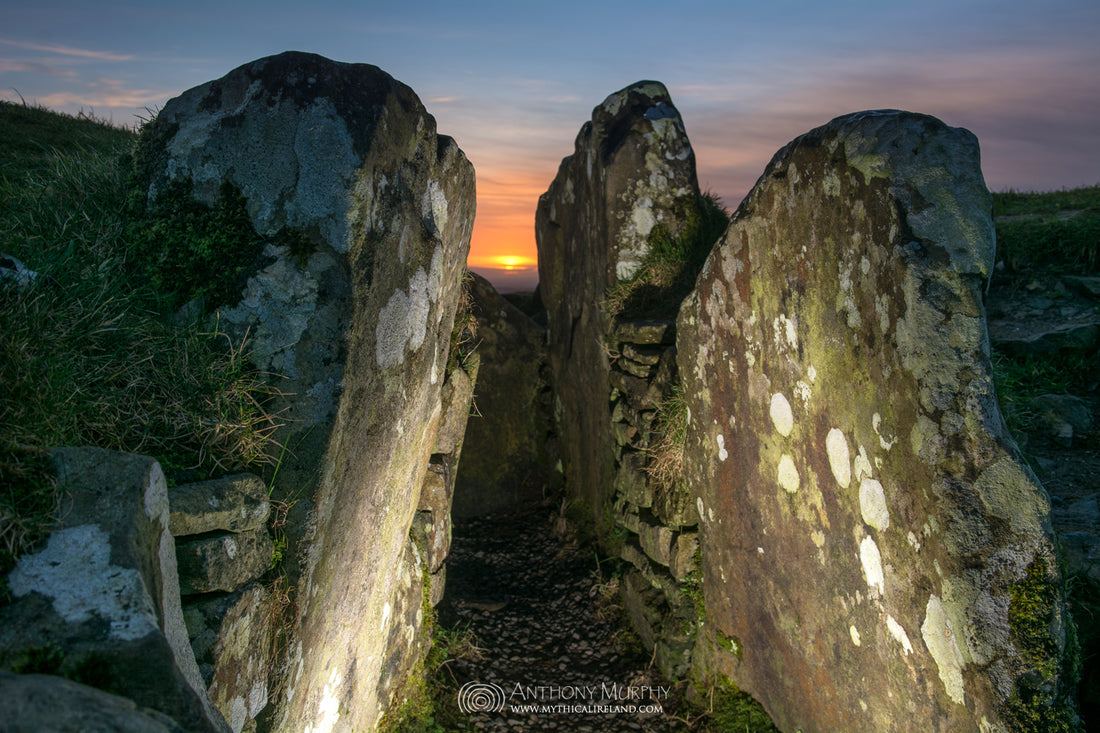
Happy Imbolc. Spring is in the air!
Happy Imbolc! Today marks the halfway point (in days) between winter solstice 2022 and spring equinox 2023. The sun is gaining elevation and strength each day as we slowly emerge from winter. Just over six weeks ago, we celebrated winter solstice – the lowest declination of the sun and the shortest days of the year.
Imbolc is one of the so-called 'cross-quarter' dates, the dates marking the halfway points between solstices and equinoxes. There are four in total. The others are Bealtaine (halfway between vernal equinox and summer solstice), Lughnasa (halfway between summer solstice and autumn equinox) and Samhain (halfway between autumn equinox and winter solstice).
A hopeful time
I find that Imbolc is a very hopeful time of year. It is a time when certain signs emerge from nature and the landscape which tell us that winter is slowly giving way and that spring and summer are coming.
For instance, just this morning the Battle of the Boyne Visitor Centre at Oldbridge (located between Drogheda and Brú na Bóinne) shared a photo of snowdrops which have emerged in the walled garden there. Here's what they had to say about these beautiful white flowers: "Snowdrops (Galanthus nivalis) are one of the first flowers of spring, they often symbolise new beginnings, hope, rebirth and the ability to overcome challenges."

In recent days, I have noticed several things that indicate a "change" and show that Imbolc was a threshold time of year. It is interesting that Imbolc is a threshold, and that it is a celebration that coincides (but is not the same as) Saint Brigid's Day, which we mark on 1st February each year.
The first was that, early in the mornings during the past week, I have heard the beginnings of what is known as the "dawn chorus". The birds were singing, and singing happily. I know that we hear birdsong most mornings of the year, but the dawn chorus in springtime always seems the liveliest, the most optimistic. Hearing that birdsong in the threshold hours of the day is wonderfully uplifting.
Another very noticeable change is the elevation of the sun. It is stronger, higher. The day is much longer now than it was six weeks ago. And from this point until Bealtaine, the daily rate of change in the length of day will be dramatic. At this latitude, the length of day from winter to summer varies by as much as 11 hours. In midwinter, the sun appears for around seven hours. In midsummer, that increases to approximately 18 hours.

The people who built the Neolithic chambered cairns of Loughcrew, Tara and other places incorporated alignments towards cross-quarter sunrises and sunsets into their monuments. At Loughcrew, Cairn U points towards Tara for Imbolc (and Samhain) sunrise (shown in the main image on this page). At Tara, Dumha na nGiall (Mound of the Hostages) points towards the same sunrise. At Loughcrew, Cairn L points towards Carrigbrack for sunrise and the rising sun illuminates a slender pillar in the chamber, spilling light onto the largest and most-decorated chamber stone.

I should also mention that the northern passage at Dowth, at Brú na Bóinne, points towards Síd in Broga (Newgrange) for Imbolc (and Samhain) sunsets.

Imbolc is here
There are 89 days between winter solstice 2022 and spring equinox 2023. Divide by two and you get 44 and a half. Add those 44 and a half days to 21st December 2022 and you arrive at 4th February 2023. Today is officially Imbolc. Today, when the birds announce the dawn with joyful singing and the sun rises from its winter slumber, we celebrate the hope and optimism of this time of year. We dream new dreams and cherish new hopes for the future.
Happy Imbolc everyone (in the northern hemisphere!). I hope that the signs of Imbolc put a new spring in your step.










1 comment
Thanks Anthony, you will make a fine Druid. (JOKE)
Margo